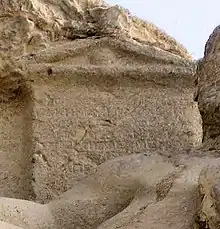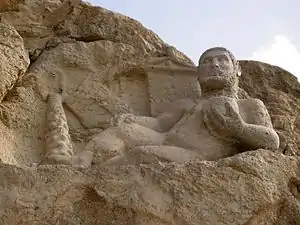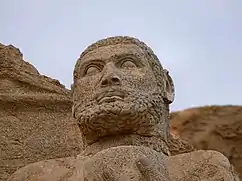Statue of Hercules in Behistun
Statue of Hercules (Persian: تندیس هرکول) is located on Mount Behistun, Iran. It was discovered in 1958.[1] The statue was sculpted in 148 BC[1] for a governor of the Seleucid Empire or the Parthian Empire. Hercules is lying on a 2 m long platform and holds a bowl in his left hand. Hiss right hand is on his foot. The statue is 1.47 m long and is attached to the mountain. The head of the statue was stolen twice, but was recovered in 1996. The current head is a replica. The original head is held by the Cultural Heritage, Handcrafts and Tourism Organization. At the time it was discovered, the sculpture had a penis, but after the Islamic Revolution (1979) it was destroyed by locals.
| Translation | Inscription (original Greek script) | Original inscription |
|---|---|---|
|
|
 Herakles inscription at Behistun |
References
- "Behistun, other monuments". Livius.org. Retrieved 10 October 2020.
- HIB Greek text – Parthian Sources Online.

